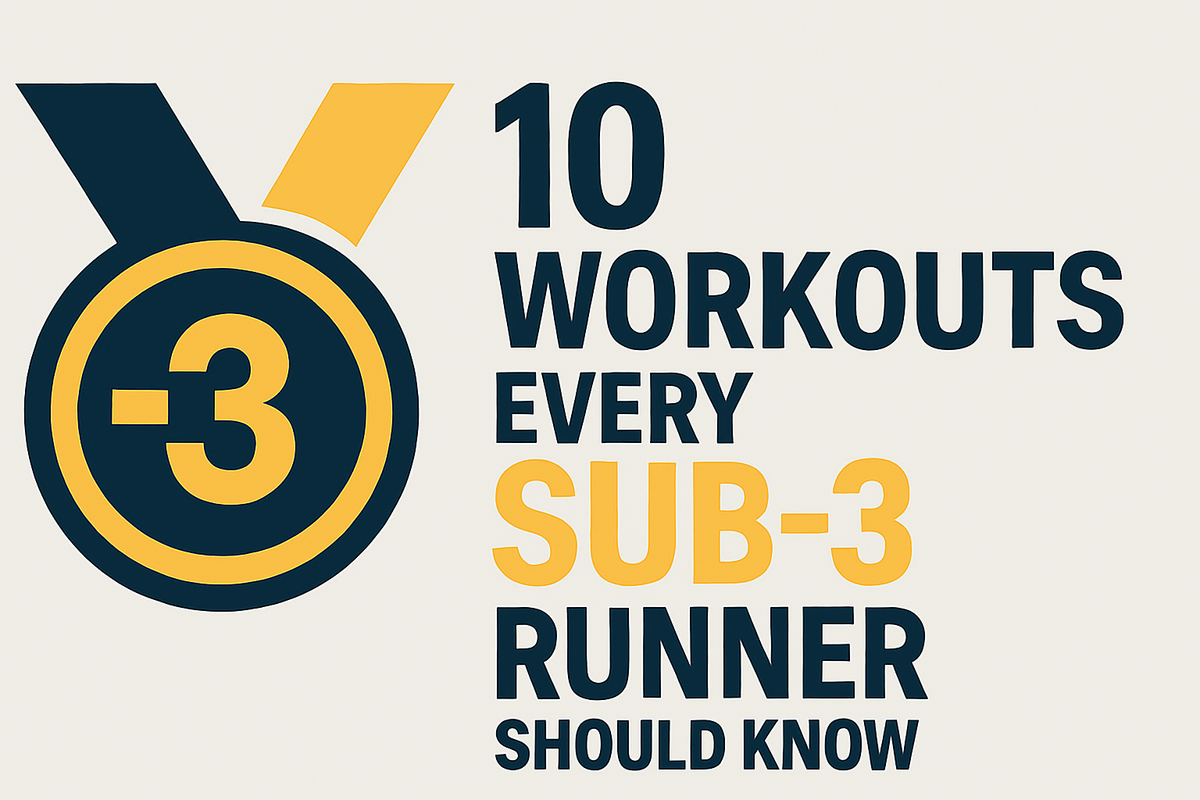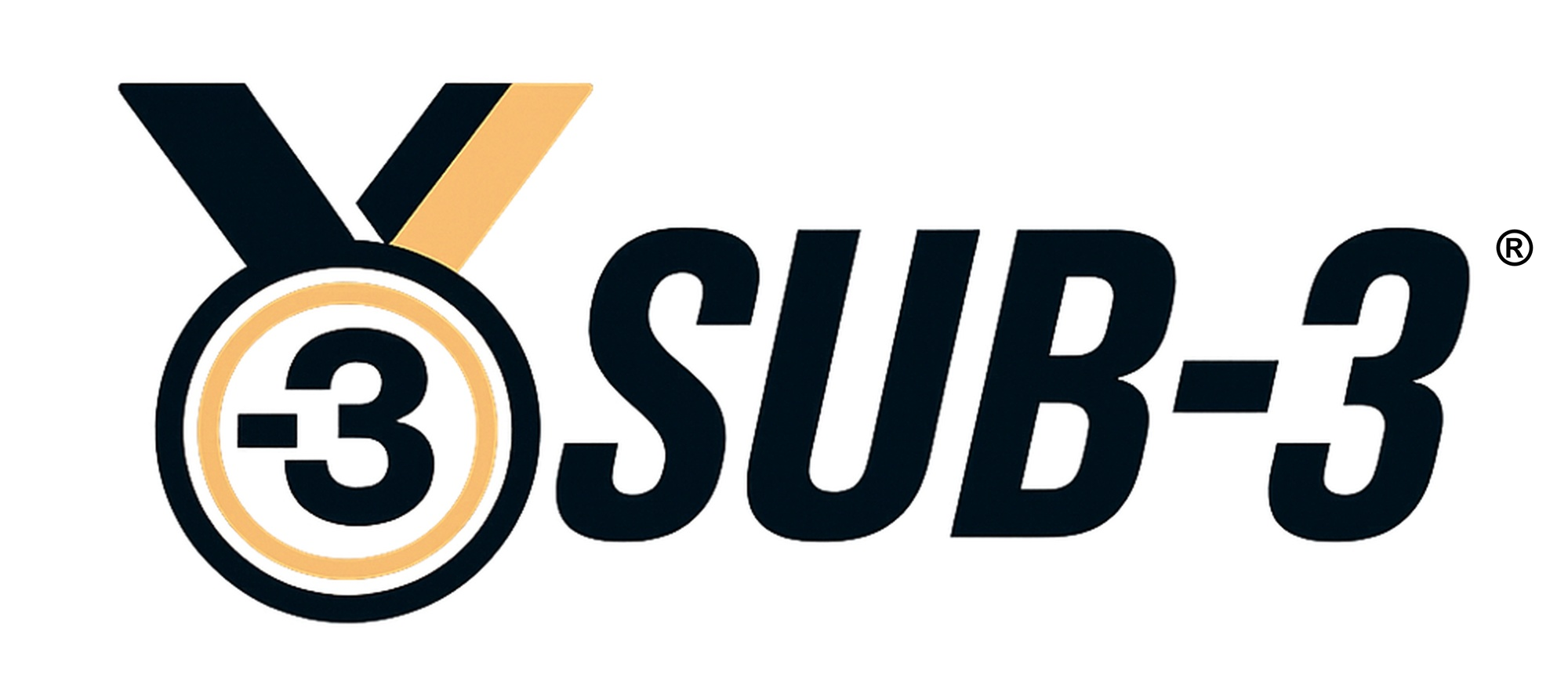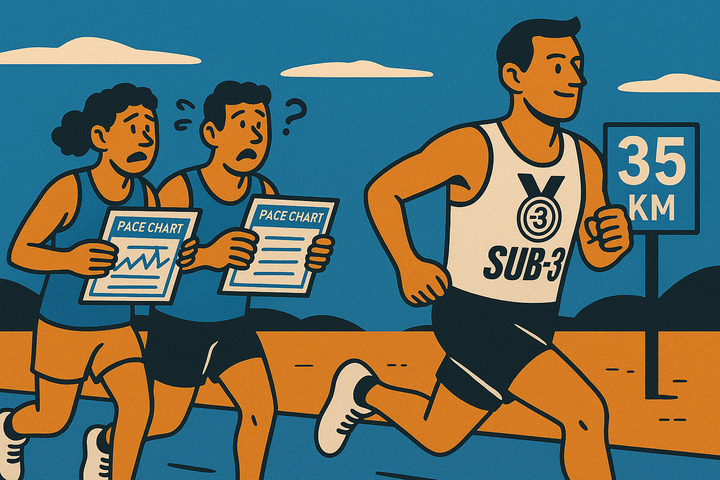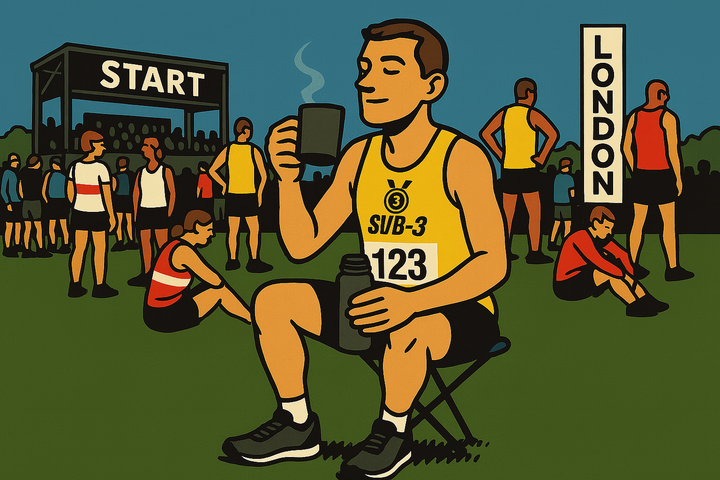10 workouts every sub-3 runner should know
You don’t need fancy stats or secret sessions. Just these ten workouts, done well and done often.

Forget the hype. There’s no perfect formula, no magic sequence, no one-size-fits-all plan. But there are patterns. If you read enough training logs, speak to enough sub-3 runners or live through enough blocks, the same types of sessions keep showing up.
These ten workouts aren’t revolutionary. That’s why they work. They build the specific fitness, resilience and mindset required to break three hours. If you’re doing most of these - and doing them properly - you’re training like a serious sub-3 aspirant.
But none of them work without recovery. These are key sessions, not daily efforts. They need to be surrounded by easy running, good fuelling and enough rest to let the adaptations land. Skip the recovery and you’ll miss the gains. You also need to ensure these are integrated into a structured training plan.
STRENGTH AND BASE PHASE (early block)
1. Hill reps: 8–10 x 90 seconds hard
Best done in the first few weeks of a block. Run 90 seconds at 5K effort up a decent gradient, and jog back down. Builds strength, power and running economy without needing high speed.
2. Medium-long steady run
Start these early and keep them going. Run 20 to 24 km at a steady aerobic effort — around 15 to 20% slower than marathon pace. It’s not glamorous, but it lays the foundation.
AEROBIC DEVELOPMENT & CONTROL (mid block)
3. Tempo run: 8 to 10 km at controlled discomfort
Classic mid-block session. Threshold effort — the fastest pace you can hold for around an hour. Hard but not frantic. Builds fatigue resistance and aerobic strength.
4. 2 x 6K or 3 x 5K at threshold
Stronger version of the tempo. Add these after 2–3 weeks of single-tempo work. Controlled effort with short recoveries. Teaches pacing under pressure.
5. Long run with speed inserts
Ideal once your base is solid. Run 25 to 30 km steady, but include 10 to 12 short efforts (60–90 seconds) at marathon pace. Gets your legs used to changing gears under load.
6. Long progression run
A progression long run (30–35 km) fits well 5–7 weeks out from race day. Start easy, increase effort gradually. The last 5 to 10 km should approach marathon pace without tipping into race mode.
SHARPENING PHASE (final 4–5 weeks)
7. Classic intervals: 8 to 10 x 90 seconds in zone 5
Use these sparingly — every 10 days or so in the sharpening phase. 3K to 5K race effort with long jogs between. These sessions raise your ceiling and add a final bit of sharpness.
8. Marathon pace intervals: up to 18 x 90 seconds
These are excellent 4–6 weeks from race day. Accumulate marathon pace volume without the grind of a long block. Float recoveries keep you honest. Controlled, smooth, efficient. Can be incorporated into a long run - with c.1.2km recoveries after each interval.
9. Race-pace blocks in midweek runs
Fits neatly into mid-to-late block training. Add 3–5 km of marathon pace inside a 15–18 km midweek run. Practises control and reinforces belief.
10. Fast finish long run
Best done 3–5 weeks out. Run the first 80-90% of your long run easy, then finish strong — ideally 3-5km at marathon pace. It’s a dress rehearsal for the toughest part of race day.
You don’t need to cram all ten into a single training cycle. But if your block includes most of these - and you’re giving yourself space to recover - you’re building the kind of fitness that breaks three hours.
Enjoyed this article? Help keep Sub-3 running — support us with a coffee.
To help fund the running of the site, Sub-3 is an Amazon Associate and earns from qualifying purchases. We only recommend gear or kit that has genuinely helped in our own running and that we believe is worth considering.



